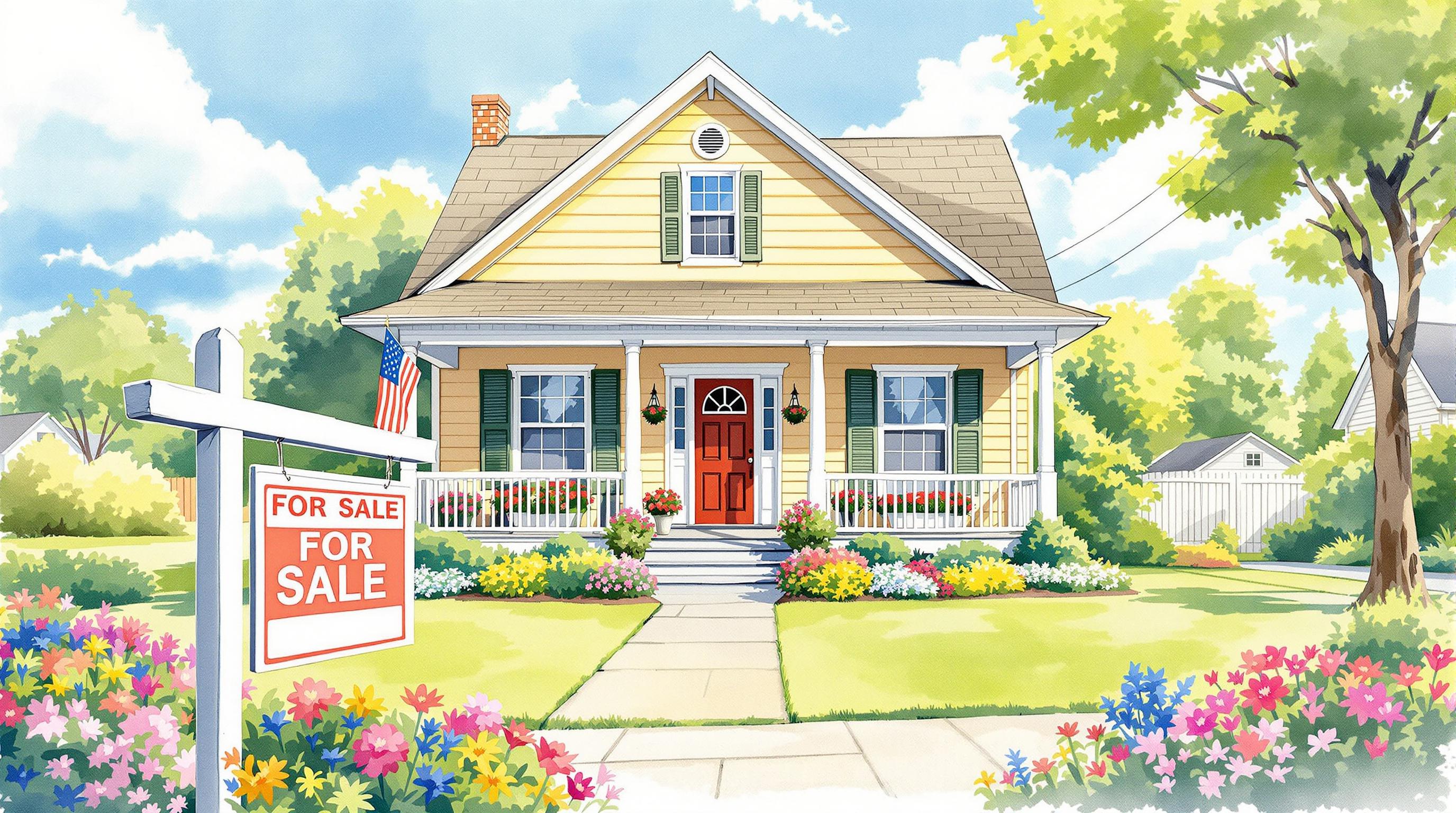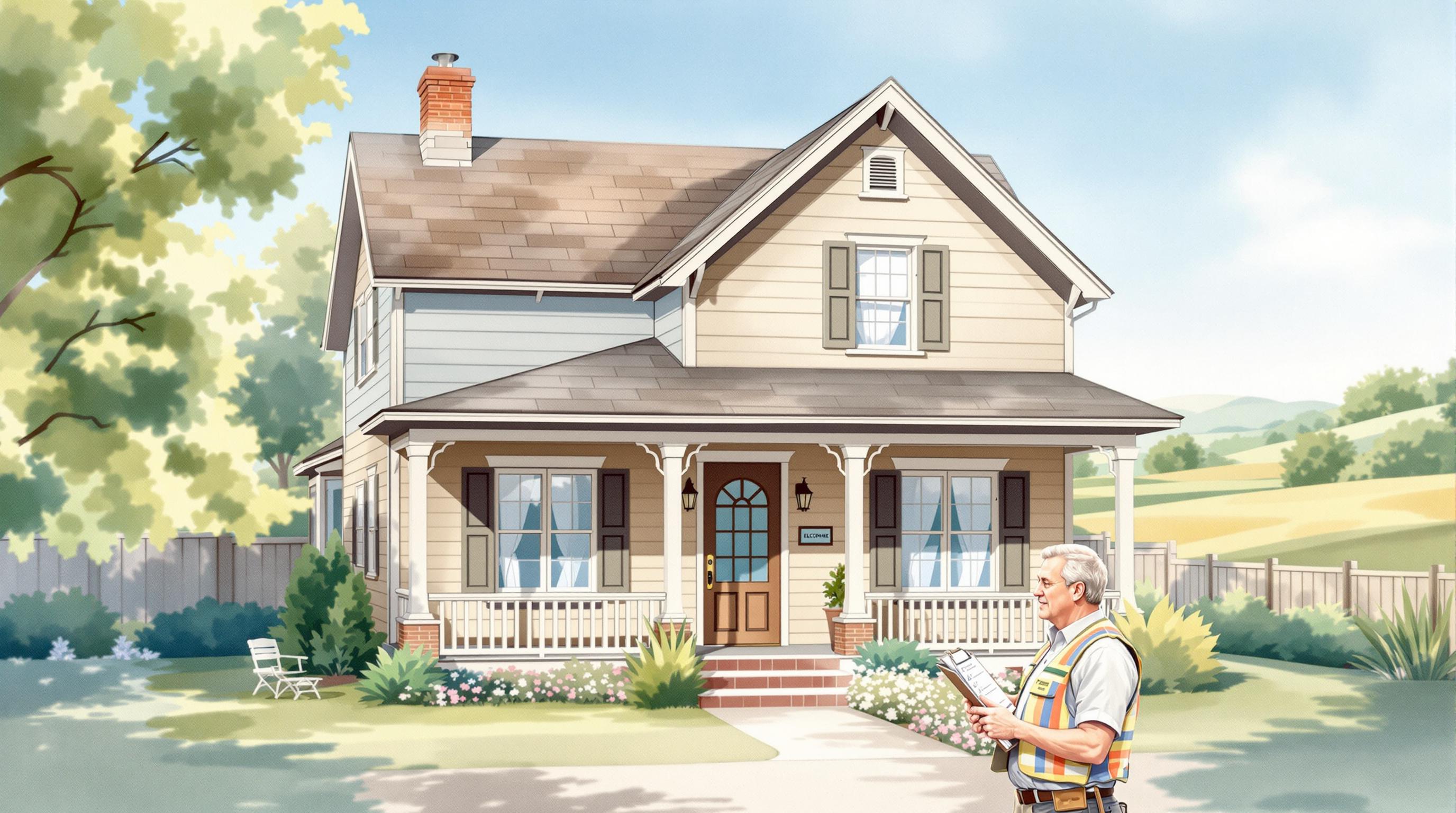Did you know? In Central Pennsylvania, home values increase by 0.5% to 1% for every 1% rise in graduation rates. Properties in districts with graduation rates above 90% appreciate 15-20% faster and sell 20-30 days sooner than those in lower-performing areas. For buyers aged 30-39, nearly half prioritize school quality when choosing a home, driving demand in top-performing districts.
Key Takeaways:
- High-performing districts (90%+ graduation rates): Homes sell for 10-15% more and appreciate faster.
- Average districts (75-89% graduation rates): Offer affordability with steady 3-5% annual appreciation.
- Below-average districts (<75% graduation rates): Homes sell at a 20-30% discount but show potential for growth with educational improvements.
| District Type | Home Value Impact | Market Days | Annual Appreciation |
|---|---|---|---|
| High (90%+) | 10-15% above average | 22 days | 7-9% |
| Average (75-89%) | Balanced affordability | 45 days | 4-6% |
| Below Average (<75%) | 20-30% lower prices | 68 days | 2-3% |
Graduation rates directly shape property values, with buyers willing to pay premiums for better schools. Whether you're buying or selling, understanding this link can help you make smarter real estate decisions.
The Impact of School Districts on Your Home's Value
School Performance and Property Values
In Central Pennsylvania, school performance has a clear influence on property values. Homes in districts with graduation rates above 90% typically sell for 10-15% more than the regional average. Some areas, like State College, stand out even further - its 94% graduation rate pushes property prices up by as much as 35% compared to nearby markets [11][5]. These trends create distinct market categories, which we’ll break down into three performance groups.
Changes in graduation rates can affect property values within a relatively short time. For example, districts that see a steady 5% increase in graduation rates often experience home value growth of 3-4% within two to three years, even after accounting for other influencing factors [6].
Interestingly, the Harrisburg School District bucks the trend. Despite having a lower graduation rate of about 75%, property values remain strong. This is largely due to urban renewal projects and the area's proximity to government jobs [4]. This pattern reflects the broader dynamic between urban and suburban property valuations.
In higher-performing districts, homeowners often accept higher tax rates because of the long-term property value growth. Cumberland Valley provides a good example, where property values have consistently appreciated over time [7].
These trends offer a framework for examining how property values align with school district performance categories.
1. Top Graduation Rate Districts
Districts like State College Area highlight a strong connection between graduation rates and property values. Homes in these districts consistently see graduation rates surpassing 90%, which often leads to higher real estate demand and pricing within their boundaries [1][12].
In the State College Area School District, for example, homes are priced 15-20% above Centre County's median home value [3]. This price bump translates into faster property appreciation and higher resale values, offering homeowners a solid return on their investment.
These districts also show steady property value growth over time. Over the last ten years, homes in areas with high graduation rates have experienced consistent appreciation, making them attractive for long-term investment.
Key market trends in these districts include:
| Characteristic | Impact on Real Estate |
|---|---|
| Property Taxes | Tend to be higher than regional averages [7] |
| Price Premium | Typically 10-30% above comparable properties [4] |
The demographics in these districts play a significant role in their stability. Higher median incomes and a strong presence of families contribute to sustained demand for properties [6].
This demand creates a competitive market for buyers. While higher property taxes might seem like a drawback, many homeowners see them as a worthwhile trade-off for better schools and property value growth. Buyers often face stiff competition, with homes in these areas frequently attracting multiple offers as soon as they hit the market [2].
sbb-itb-7fa5722
2. Average Graduation Rate Districts
School districts with graduation rates between 75-89% offer a balanced option for buyers seeking quality education without the premium price tag of top-tier districts. These areas strike a middle ground, with property values that are more affordable than high-performing districts but remain higher than struggling ones, making them an appealing choice for value-conscious buyers[10].
Take Mechanicsburg Area School District, for example. With an 88% graduation rate, the median home value is $225,000. Meanwhile, Susquehanna Township, with an 85% graduation rate, has a median home value of $180,000[4]. Both illustrate how educational quality influences housing demand, though at price points more accessible than elite districts.
These districts also tend to weather economic downturns better. Property values here typically drop by only 5-8%, compared to the 10-15% declines seen in weaker districts[6]. This makes them an attractive option for buyers looking to minimize risk while still benefiting from stable growth.
| District Performance Metric | Impact on Property Values |
|---|---|
| Annual Value Appreciation | 3-5% growth rate |
| Economic Downturn Resilience | 5-8% maximum decline |
| Price Differential vs Top Districts | 10-15% lower |
| Price Premium vs Low-Performing | 5-10% higher |
The buyer demographic in these districts also differs slightly. Around 62% of buyers are aged 30-45, compared to 55% in top-tier districts[8]. For example, Middletown Area School District, with an 82% graduation rate, has a median home value of $165,000, catering largely to younger families[4].
Graduation rates remain a key driver of demand, but other factors like specialized programs and infrastructure improvements can also boost property values. In fact, for every 5% increase in graduation rates, home values in these districts typically rise by 4-6%[9]. This outpaces similar districts on a national scale.
Real estate experts point out that districts investing in educational programs and infrastructure often see rising property values before their graduation rates even reach top-tier levels[11]. Additionally, these districts usually offer lower property taxes compared to high-performing areas while still delivering solid educational opportunities[1]. For buyers, this combination of affordability, quality, and potential for appreciation makes these districts a smart choice.
3. Below Average Graduation Rate Districts
In Central Pennsylvania, districts with graduation rates under 75% face tough challenges. These areas, such as the York City School District (70% graduation rate), also see lower property values. For instance, York City's median home price is around $80,000 - less than half the state median of $180,000[13]. Overall, homes in these districts sell at a 20-30% discount compared to similar homes in higher-performing areas[2].
This price gap reflects more than just educational concerns. Socioeconomic factors play a role, with poverty rates in these districts running 10-15 percentage points higher than the state average[1].
| Metric | Below Average Districts |
|---|---|
| Median Home Value | $75k-$80k |
| Value Discount | 20-30% |
| Poverty Rate | +10-15 pts vs state |
Despite these struggles, there are signs of progress. For example, York City's Midtown neighborhood has seen renovated homes sell for 12-18% more than the district's average[15]. Programs like the "Freshman Academy" in the York City School District aim to improve educational outcomes[14]. Experts predict that if graduation rates rise, property values could increase by 5-10% over the next decade[14].
Real estate agents often highlight other selling points in these areas:
- Affordability: A great option for first-time buyers.
- Investment potential: Opportunities in neighborhoods showing signs of improvement.
For homeowners, focusing on upgrades like modern kitchens or improved landscaping can help properties stand out[16]. Marketing to a variety of buyers, including investors and those without school-age children, can also boost selling potential. While these strategies help offset the impact of low graduation rates, long-term value growth depends on improving educational outcomes. This trend mirrors what has been observed in average-performing districts where rising graduation rates have driven property appreciation[14].
Benefits and Drawbacks
Graduation rate tiers reveal distinct trends in real estate:
| District Level | Appreciation % | Market Days | Multiple Offers % | Sale/List % |
|---|---|---|---|---|
| High (95%+ grad rate) | 7-9% | 22 days | 65% | 98% |
| Average (75-95%) | 4-6% | 45 days | 45% | 96% |
| Below Average (<75%) | 2-3% | 68 days | 30% | 94% |
These trends highlight the trade-offs buyers face based on their priorities. For instance, purchasing a home in a top-performing district usually requires about 80% of the regional median household income for mortgage payments. In contrast, homes in average-performing districts demand closer to 65%. This difference reflects the 15-20% price premiums often seen in top districts.
When it comes to rentals, top districts also charge 15-20% higher rents, even though annual yields tend to be lower (4-5% compared to 6-7% in average districts)[17]. This rental premium aligns with the elevated sales prices in these areas.
In short, high-performing districts provide stability and long-term value but come with higher costs. Average districts, on the other hand, strike a balance between affordability and growth potential.
"The impact of school districts on property values has increased over the past 12 years, with the number of homeowners with a bachelor's degree growing 18% since 2010"[16].
Conclusion
In Central PA's three district tiers, the link between graduation rates and property values plays a key role in shaping local real estate markets, especially in suburban areas. Buyers are often willing to pay higher prices for homes in districts with strong educational performance, while sellers in these areas can use these metrics to attract interested buyers.
When evaluating opportunities, it’s important to consider factors like urban renewal projects or unique educational programs. Local experts, such as Central PA Realty, assist sellers in taking advantage of district-driven demand through services like immediate cash offers or connecting with motivated buyers. They also help buyers navigate the specific challenges and benefits tied to each district.
This tiered system highlights the importance of strategy. Whether aiming for the stability of top-performing districts, the balance of mid-tier areas, or the potential growth in emerging districts, understanding these patterns allows buyers to make smart investments and sellers to maximize their returns.



